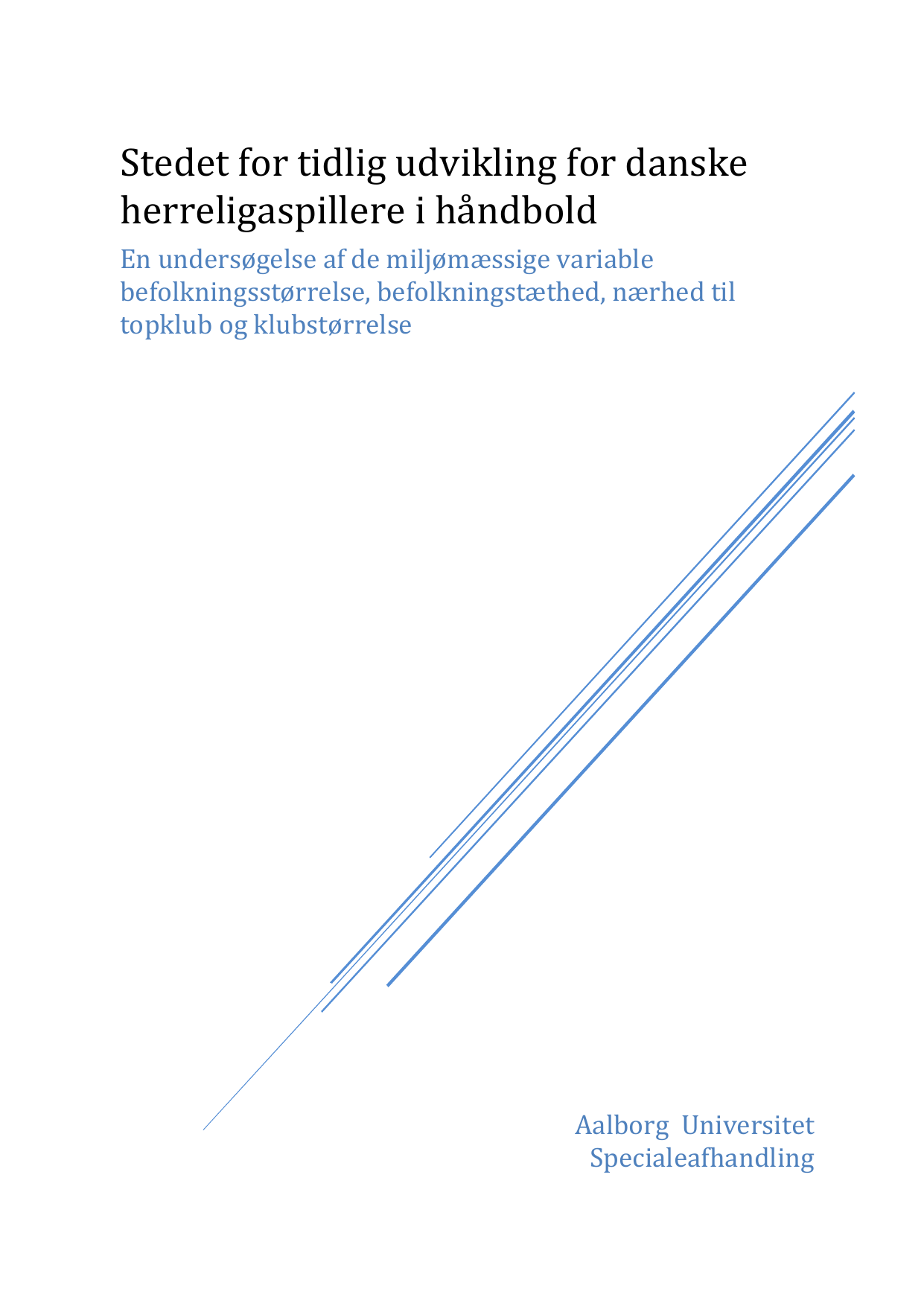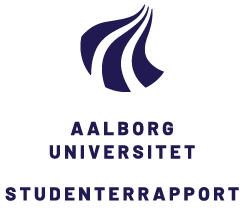
Stedet for tidlig udvikling for danske herreligaspillere i håndbold: En undersøgelse af de miljømæssige variable befolkningsstørrelse, befolkningstæthed, nærhed til topklub og klubstørrelse
Oversat titel
The place of early development for men's handball players from the top league in Denmark: An investigation of the environmental variables population size, population density, proximity and club size
Forfattere
Semester
4. semester
Uddannelse
Udgivelsesår
2019
Afleveret
2019-06-05
Antal sider
70
Abstract
Dette speciale undersøger stedet for tidlig udvikling for herrehåndboldspillere fra den bedste liga i Danmark. Variablene befolkningsstørrelse, befolkningstæthed, nærhed til topklub og klubstørrelse bliver gennem en Odds ratio – og GIS analyse undersøgt i forhold til sandsynligheden for at blive ligaspiller. Variablenes indbyrdes afhængighed bliver undersøgt gennem en chi2-test. Resultaterne fra OR analysen viste en tendens til at lave befolkningsstørrelser og tætheder udvikler forholdsvis mange talenter. I GIS analysen kom det frem at nærhed til topklub som variabel ikke kan forudsige udviklingen af ligaspillere. I forhold til variablen klubstørrelse er det fundet at klubber med 400-500 medlemmer er associeret med større sandsynlighed for at udvikle ligaspillere. Chi2- testen viste en sammenhæng mellem klubstørrelse og henholdsvis befolkningsstørrelse og tæthed.
This master's thesis examines the place of early development for men's handball players from the top league in Denmark. The variables of population size, population density, proximity to top club and club size are examined through an odds ratio - and GIS analysis in relation to the probability of becoming a league player. The interdependence of the variables is examined through a chi2-test. The results of the OR analysis showed that low population sizes and densities is related to expertise in Handball. The GIS analysis showed that proximity to the top club as a variable cannot predict the development of league players. In relation to the club size variable, it is found that clubs with 401-500 members are associated with greater likelihood of developing league players. The chi2-test showed a relationship between club size and population size and density, respectively. The results indicate that there is beneficial effects with both belonging to low densities and to belonging in clubs with the size of 401-500 members.
Emneord
